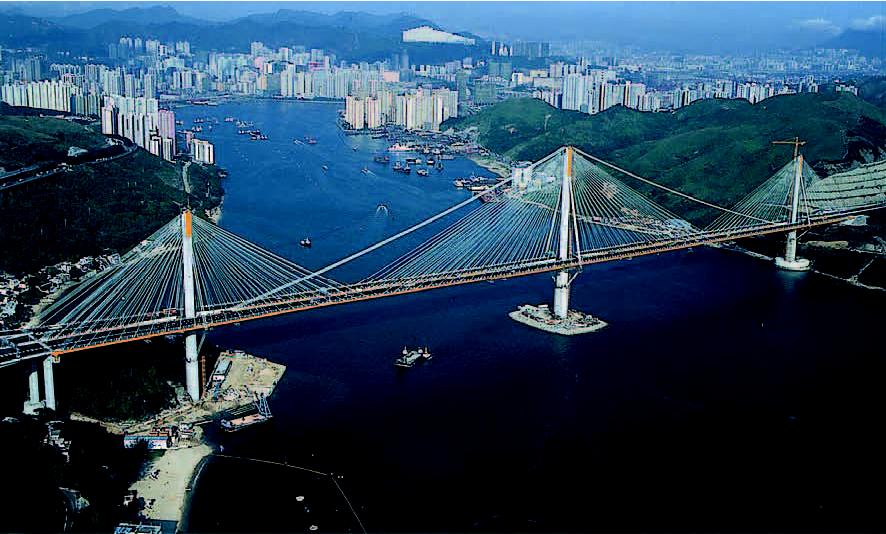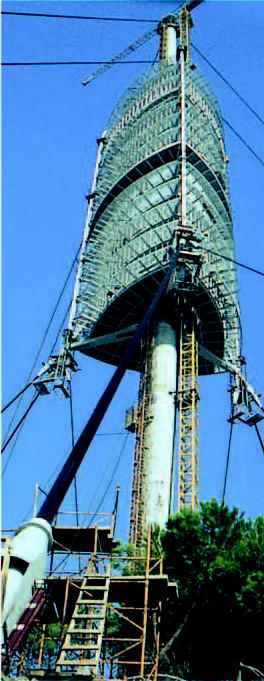Freyssinet stay cable technology was first developed in the mid-1970s, and has been improved continuously ever since. It is the reference in terms of fatigue resistance, protection against corrosion, inspectability and replaceability.
The inventor of the multistrand stay cable
A parallel strand system: robust and flexible
Freyssinet invented the multistrand parallel system in 1976. The Freyssinet HD stay cable is based on each strand being completely independent.
This principle has many advantages, including:
- installation and tensioning of each strand individually;
- individual protection against corrosion;
- individual removal and replacement if necessary.
The standard range of HD stay cables varies from 1 to 169 strands. However, there is no limit to the capacity or the length of stay cables. The largest stay cables yet installed were for the Collserola telecommunications tower in Spain (205-strands) and the longest are the stabilization stay cables for Ting Kau bridge in Hong Kong (465 m long).

Ting Kau bridge / Hong Kong

Coliserola tower / Spain
The Freyssinet monostrand
A galvanised strand with a semi-bonded sheath
The tension element of the Freyssinet HD stay cable consists of a group of parallel individually protected T15.7 strands named “Freyssinet monostrand”.
This patented stay cable strand has excellent durability and provides perfect protection against corrosion due to two complementary nested barriers formed by galvanisation and a semi-bonded individual HDPE sheath extruded onto the strand after the interstices have been filled with a specifically developed wax.
The bundle of Freyssinet monostrands is usually contained in an HDPE (High Density Polyethylene) co-extruded outer pipe specially designed to satisfy stay cable needs and to give excellent durability.


